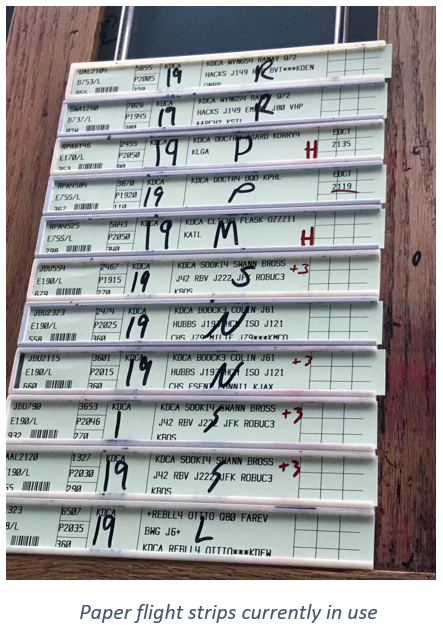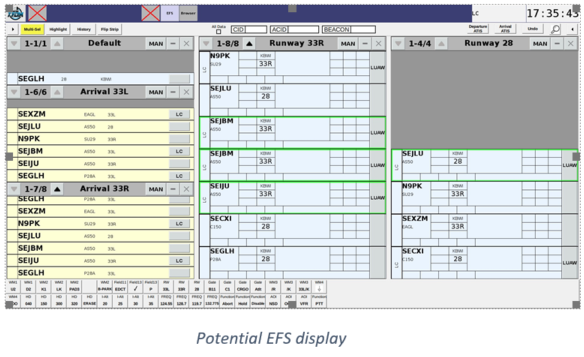Electronic Flight Strips
 The TFDM program will install electronic flight strips (EFS) in air traffic control towers across the United States. For decades, air traffic controllers have used paper flight strips to keep track of flights. Upgrading to electronic flight strips is a significant change with substantial benefits.
The TFDM program will install electronic flight strips (EFS) in air traffic control towers across the United States. For decades, air traffic controllers have used paper flight strips to keep track of flights. Upgrading to electronic flight strips is a significant change with substantial benefits.
EFS will allow for real-time data updates, streamlining the entire flight-plan process, and enabling data sharing with stakeholders for collaborative decision making around surface movement. It also makes it easier for controllers to handle fluctuations in traffic volume, changing weather, and all the myriad of situations that affect surface traffic control decisions every minute of every day. For example, EFS will automate memory aids to inform a controller of situations on the field such as closed runways.

In order to populate information on the strips, TFDM interfaces with the following systems:
- Flight Data Input/Output (FDIO): ERAM flight and other data
- Airport Surface Detection Equipment, Model X (ASDE-X)/Airport Surface Surveillance Capability (ASSC): Integration of surface surveillance data
- Standard Terminal Automation Replacement System (STARS): Integration of arrival data including scratchpad data
- Tower Data Link System (TDLS): Integration of pre-departure clearance (PDC)/Departure Clearance (DCL) clearance data
- Traffic Flow Management System (TFMS)/Time Based Flow Management (TBFM): Integration of TFM data via System Wide Information Management (SWIM)
- Flight Operations Systems: Integration of CDM and airport data with flight operator systems via SWIM
- FAA Telecommunications Infrastructure (FTI): Secure communications and serves as a time source
- Remote Monitoring and Logging System (RMLS) via SWIM: Remote monitoring and maintenance
